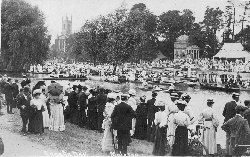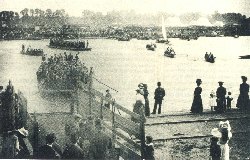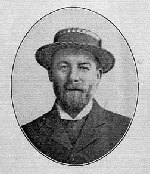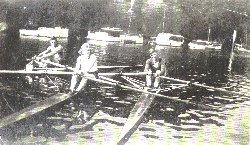Rowing
A water sport derived from methods of transport and warfare


Twickenham Rowing Club was founded in 1860, with the Treasury official Vincent Griffiths, a prominent local resident, as Secretary and the Duc d'Aumale as President. The event was marked by the publication of a piece of music, possibly commissioned by the Duc, dedicated to the club. It was composed by W Vincent Wallace, the son of an Irish bandmaster and has been made the subject of a CD, obtainable from the club.
Many prominent men joined the club, whose membership by 1865 numbered 114. The club organised regattas and social activities as well other sporting events including swimming races, and running races in a field near the railway station. In 1880 its boathouse and clubhouse on Eel Pie Island were constructed. Renowned members included Leonard Frere, a highly successful stroke, and the Cambridge oarsman John Goldie, who lent his name to the University's second crew.
Since 1867 the stretch of river between Hampton and Molesey has been home to Molesey Amateur Regatta. In 1883 this was described as holding “second place to Henley alone”. The event has been headquartered on both riverbanks over the years and is now run from the Molesey side. This same stretch of river also provides homes to Molesey Boat Club, one of the leading rowing clubs in the country, as well as the boathouse shared by Hampton School and The Lady Eleanor Holles School.
There was a Twickenham Regatta, founded in 1923, a Teddington Reach Regatta and a Hampton Regatta, as well as various other local events.

The Twickenham Boys' and Girls' Regatta was founded by Charlie Shore in 1894. It was a popular event until the Second World War and was run until 1950. Even though Charlie Shore died in 1911, his portrait (with distinctive beard and straw hat) continued to form a set piece in the firework display that, by established custom, concluded the day.
Charlie Shore's Regatta was revived after a 50 year gap, in September 2011.

Frank Ambler won his Doggett's Coat and Badge in 1947 (the 1944 race only took place after the war). Earlier, in 1903, Ernest Barry, a local waterman won the race. Frank's brother was runner-up in 1935 and his sister Betty (seen above) was herself a champion sculler. Walter Hammerton won the sculling coat and badge at the Kingston Regatta in 1900.




